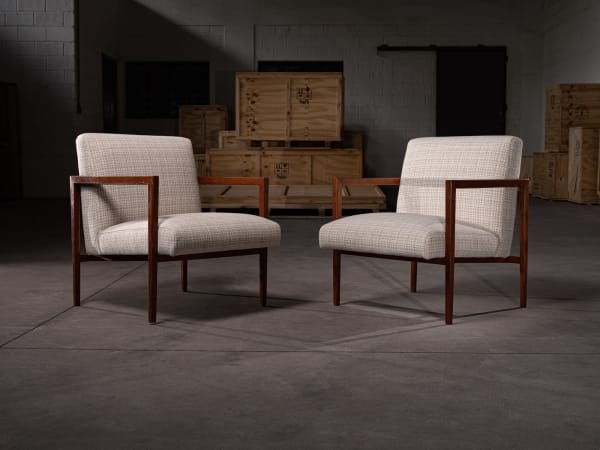Branco & Preto Brazilian
Móveis Branco & Preto was founded in 1952 by a group of architects who graduated from Mackenzie University in São Paulo: Miguel Forte, Carlos Millan, Chen Hwa, Jacob Ruchti, Plínio Croce, Roberto Aflalo, and Salvador Candia. These architects from São Paulo, aiming to create minimalist furniture with innovative and timeless design, established their store on Vieira de Carvalho Street, in the heart of São Paulo. The store offered not only furniture but also ceramics, art objects, lighting fixtures, and fabrics.
Working primarily as architects, they used the store as a laboratory to promote experiments with new industrial materials such as laminated wood, welded iron, and plastic. Their furniture stood out for its functional and ergonomic design, with great attention to comfort. Each piece was produced in small series by skilled craftsmen, without any intention of industrialization. For example, chair components were individually crafted, ensuring exceptional solidity while preserving a light and refined aesthetic.
The aesthetics of Branco & Preto reflect the influences of Frank Lloyd Wright (by Jacob Ruchti and Miguel Forte) as well as Richard Neutra, Marcel Breuer, and Mies van der Rohe (by Plínio Croce, Roberto Aflalo, and Carlos Millan). Their approach aimed at creating elegant and functional furniture perfectly suited to the new modern spaces they designed.
Despite its closure in the late 1950s due to a shortage of skilled labor and the architects’ declining interest in managing the store, Móveis Branco & Preto made a lasting impact on the history of Brazilian design. Its legacy endures thanks to the dissemination of a pioneering formal vocabulary that has stood the test of time.
Source: Galli, Vera. Cadeira, o mobiliário no Brasil. São Paulo, 1988.
Marlene Milan Acayaba, Branco & Preto: uma história de design brasileiro nos anos 50. São Paulo: Instituto Lina Bo e P.M. Bardi, 1994.




